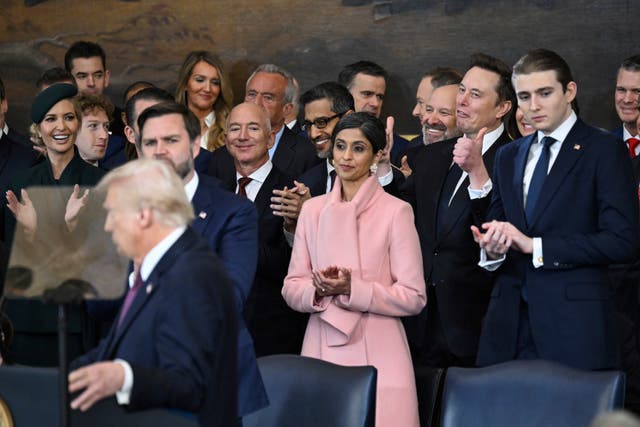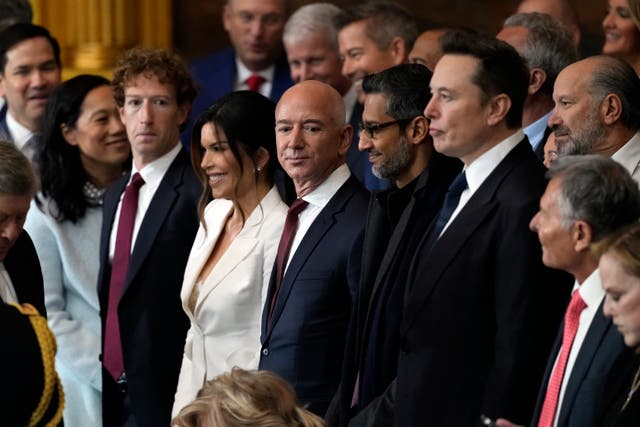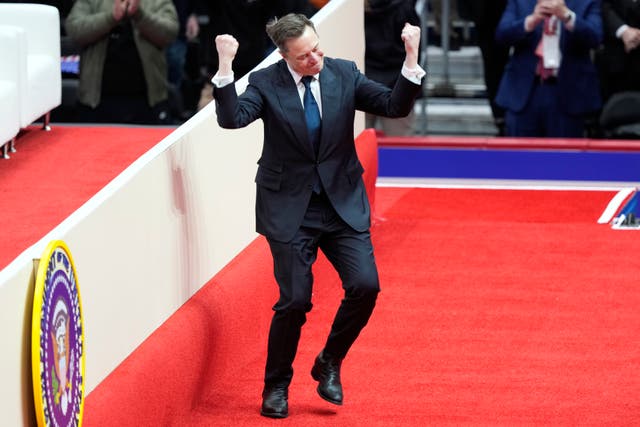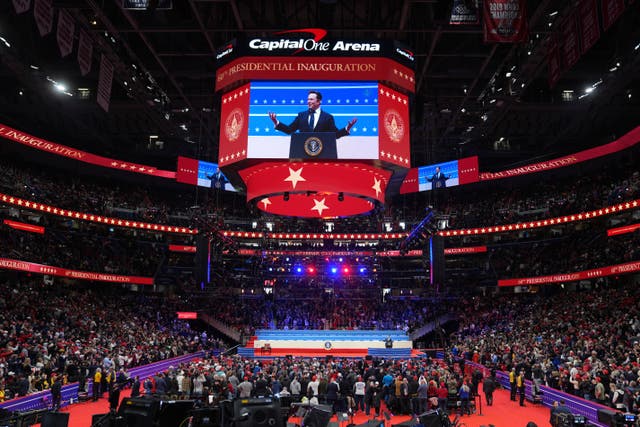Musk’s prominence during inauguration ceremonies stamps place in Trump’s orbit
SpaceX chief executive Elon Musk heaped praise on US President Donald Trump during a rally shortly after the swearing-in.

Getting humans to Mars has long been an obsession for SpaceX chief executive Elon Musk, and on Monday that project got a full endorsement from the newly sworn-in US president.
During his inaugural address, President Donald Trump promised he would “pursue our manifest destiny into the stars, launching American astronauts who plant the Stars and Stripes on the planet Mars”.
Mr Musk, standing just a few feet away, grinned widely and pumped his fists in the air.

The blossoming relationship was on full display throughout the inaugural ceremonies.
Mr Musk heaped praise on Mr Trump during a rally shortly after the swearing-in, repeating Mr Trump’s promise of a coming “golden age” for the country.
“It is thanks to you that the future of civilisation is assured,” Mr Musk told the crowd at Capital One Arena.
On his social media platform X, Mr Musk posted his approval of Mr Trump returning to power for a second term: “The Return of the King.”
During the inauguration inside the Capitol Rotunda, Mr Musk was seated in a row that included other tech giants, including Google chief executive Sundar Pichai and Meta chief executive Mark Zuckerberg.
All were seated behind Mr Trump’s wife, Melania, and children, though Mr Musk was seated closest to Mr Trump.
Shortly after Mr Trump’s youngest son, Barron, arrived at his seat in the second row, he turned and shook hands with Mr Musk, who was visible in the televised shot of the podium throughout much of the proceedings.

Mr Musk contributed roughly 200 million dollars (£162 million) to America PAC, a super political action committee that worked to organise Trump support last autumn.
The proximity of so many of the world’s wealthiest people to Mr Trump’s incoming government led former president Joe Biden to warn of a burgeoning US oligarchy of tech billionaires.
Among the projects Mr Trump has assigned Mr Musk is to work on an effort known as the Department of Government Efficiency.
The mandate of the advisory group, which operates outside the formal government, is to slash federal bureaucracy, regulations and spending, a target Mr Musk set last year at two trillion dollars, roughly the size of the deficit.
Cuts of that scale would be likely to require targeting entitlement programmes such as Social Security and Medicare, as well as laying off hundreds of thousands of federal employees.
Though still bullish on the prospect for deep cuts, Mr Musk noted during a public forum earlier this month that the two trillion dollar target might be difficult to achieve.
“I think if you try for two trillion dollars, I think we can get to one (trillion),” Mr Musk said during a question-and-answer session on X with pollster Mark Penn.

It has not all been rosy.
There has been some early tension between Mr Musk and influential Trump supporters, including former campaign adviser and conservative podcaster Steve Bannon, over Mr Musk’s support for immigration visas that bring skilled foreign workers to the US.
Though Mr Trump appears to have sided with Mr Musk and others in the tech industry, Mr Bannon criticised the programme as at odds with the administration’s “America first” mantra.
In what could signal a division within Mr Trump’s base, Mr Bannon vowed this month in an interview with an Italian newspaper to “have Elon Musk run out of here”.
Mr Musk also stirred up some Republican legislators after he helped scuttle a bipartisan government funding proposal last month, in part by posting false claims on X, where he has more than 200 million followers.
The platform has largely abandoned guardrails against misinformation and has experienced a surge in conspiracy theories and bogus claims since Mr Musk bought what was then Twitter nearly three years ago.

During his rally speech later at the arena, Mr Musk could hardly contain his enthusiasm.
“Man, I can’t wait,” he said. “This is going to be fantastic.”





